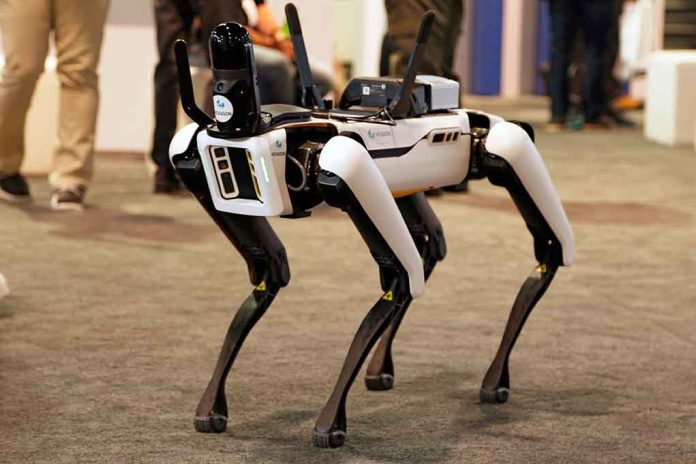
A viral video depicting a mock battle between a robotic dog and a drone has ignited discussions about the future of automated warfare.
Top Takeaways
- A viral video from China shows a simulated battle between a robotic dog and a drone, sparking debates about future warfare.
- Drones have become increasingly common and cost-effective in modern warfare, with extensive use in the Ukraine-Russia conflict.
- The video raises questions about the potential for autonomous machines in combat scenarios.
- China aims to become a leading supplier of drones and robotic units for military use, prompting concerns about global military dynamics.
Viral Video Sparks Debate on Future Warfare
A recent video circulating on Chinese social media has captured the attention of viewers worldwide, showcasing a simulated battle between a robotic dog and an aerial drone. The video, which features the devices equipped with fireworks simulating firearms, has sparked intense discussions about the potential future of automated warfare. While the machines depicted are not military-grade, the scenario has raised important questions about the role of autonomous devices in combat situations.
The viral nature of this video underscores growing public interest and concern about the rapid advancement of military technology. As drones and robotic systems become increasingly sophisticated and prevalent in modern warfare, this mock battle serves as a stark reminder of how combat may evolve in the coming years.
The Rise of Drones in Modern Warfare
Drones have undergone a significant transformation in recent years, evolving from large, expensive machines to smaller, more cost-effective tools widely used in military operations. The ongoing conflict between Ukraine and Russia has demonstrated the extensive use of these devices, with Ukraine reportedly deploying over 1.2 million drones and Russia producing more than 1.4 million.
There is a growing sentiment that AI-powered devices are ushering in a new era of warfare. The proliferation of drones in conflict zones has already demonstrated their effectiveness in reconnaissance, targeting, and even direct combat roles.
Robotic Dogs: The Next Frontier?
While drones have become a familiar sight in modern conflicts, robotic dogs represent a newer and potentially game-changing technology. Ukraine has announced plans to use these devices for frontline missions, indicating their perceived value in combat scenarios. In the United States, the Marines are testing a robot dog equipped with an AI-targeting rifle, further highlighting the potential military applications of this technology.
The involvement of major powers in developing and deploying these technologies raises significant questions about the future of warfare. China, in particular, has shown a strong interest in becoming a leading supplier of drones and robotic units for military use. This ambition has implications for global military dynamics and could potentially spark a new arms race focused on autonomous combat systems.
Ethical and Strategic Concerns
The advancement of automated warfare technologies brings with it a host of ethical and strategic concerns. The potential for autonomous machines to make life-or-death decisions on the battlefield raises serious moral questions. Additionally, the proliferation of these technologies could lower the threshold for armed conflict, as countries may be more willing to engage in warfare if human casualties on their side can be minimized.
Robot dogs armed with AI-targeting rifles undergo US Marines Special Ops evaluation
A still image of a robotic quadruped armed with a remote weapons system, captured from a video provided by Onyx Industries. pic.twitter.com/9z1Qm05INL— Black Hole (@konstructivizm) May 9, 2024
As nations continue to invest in and develop these technologies, it is crucial for policymakers, military strategists, and the public to engage in thoughtful discussions about the implications of automated warfare and work towards ensuring that technological progress does not outpace our ability to manage its consequences.






















